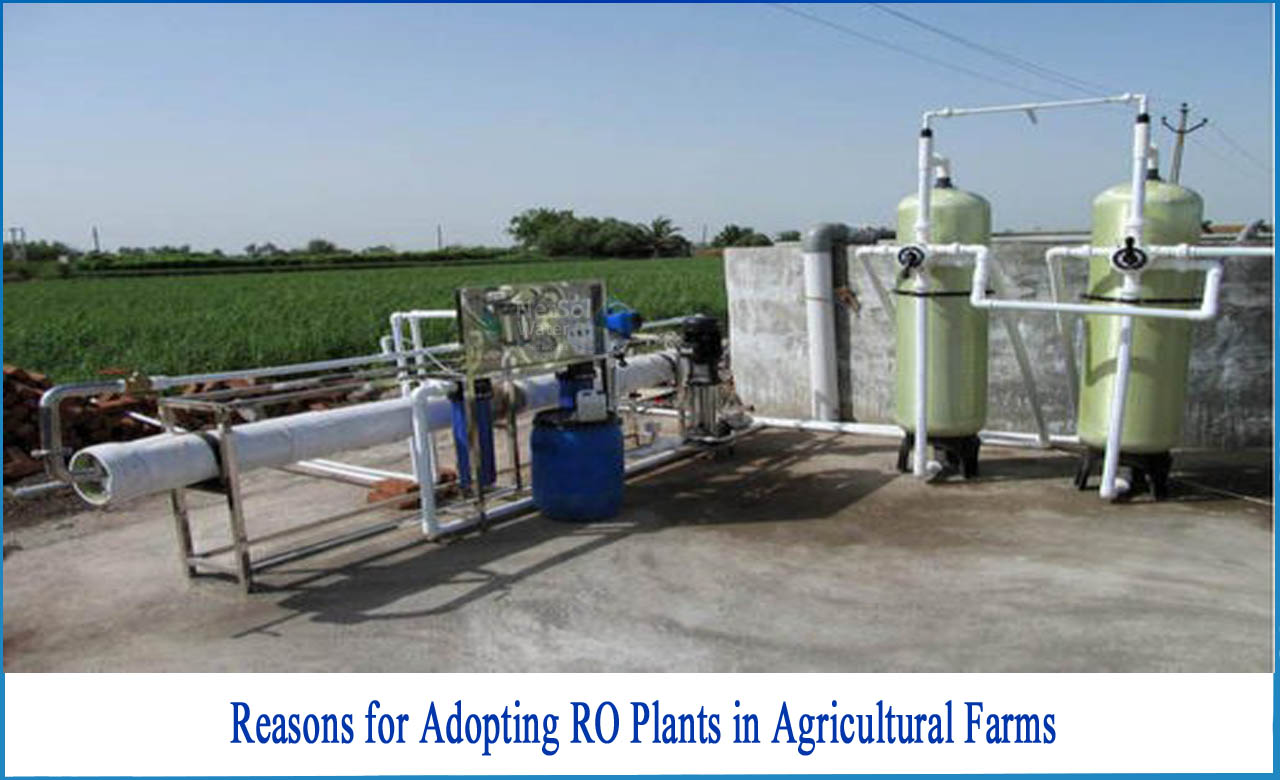Water is now considered a rare resource. Because of the rising demand for food grains and agricultural products, traditional water sources are becoming increasingly scarce. As a result, water is being depleted at a faster rate. Borewells, for example, aren't helping to increase the amount of water available for cultivation. As we continue to go deeper, the possibility of pollutants contaminating the water grows. This necessitates a consistent source of adequate water to ensure that farm outputs are not harmed. The reason for this is because water filtration systems are becoming increasingly popular in the farming and agriculture industries.

Reverse Osmosis is a basic mechanism for obtaining high-quality water (RO). The high pH of water is reversed using this method. A pH of 7 indicates that the water is balanced (which is neither acidic nor alkaline). Crops, soil, plants, and seeds all benefit from this type of water. Reverse osmosis is used in a RO water filter to improve the quality of the water. Farm owners may acquire better quality water for many farming tasks such as irrigation, vegetable washing, livestock feeding, and cleaning with a good system. In the absence of impurities blocking the delivery of nutrients to the roots and seeds, the crops can absorb nutrients more effectively through filtered water.
REVERSE OSMOSIS PLANTS IN AGRICULTURAL FARMS: HOW CAN THEY HELP?
Using or adopting water treatment systems like RO for your agriculture fields will provide you with a lot of advantages. These types of water purification technologies assist farmers in growing crops while also sustaining landscapes and re-stagnating dispersed soils in dry places or during periods of below-average rainfall. It's also a great strategy to keep crop production up by reducing soil consolidation, offering frost protection, decreasing weed growth in grain fields, and preventing soil consolidation.
The following are some of the crucial roles that reverse osmosis plays in the life of any plant:
1. It is a method by which plant cells maintain their water content despite the continual loss of water to the air.
2. It gives the softer tissues turgidity, which is necessary for their mechanical support.
3. It regulates the amount of water absorbed by root hairs from the soil.
4. The transport of water across the cortical cells of the roots is controlled by the diffusion pressure deficit.
5. Water diffusion from cell to cell is also regulated by osmosis.
6. Plants are more resistant to drought harm when their osmotic pressure is higher.
7. It regulates the turgidity of guard cells, which controls the opening and closing of stomata during transpiration.
8. It has a significant impact on cell meristematic activity and, as a result, plant growth.
Considering all these factors, installing RO plants can be useful for agricultural purposes to provide cleaner water for much yield.



